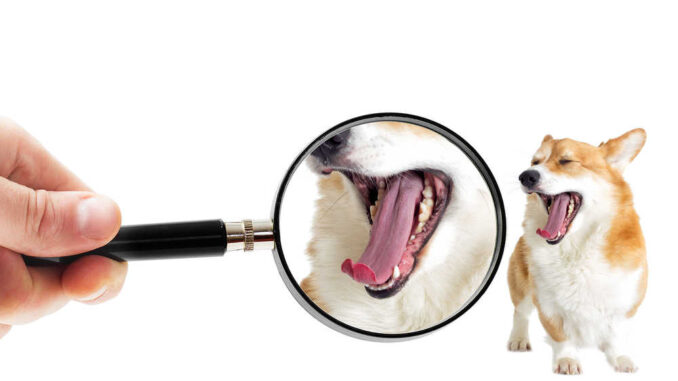
This article was updated on December 3rd, 2023
Mouth “sores” in dogs are often referring to oral ulcers. An ulcer is a defect in the oral mucosa (inside the lining of the mouth) that has become inflamed and painful. Mouth sores could also be masses/tumors, papillomas or damages from an injury. In this article, we will review pictures of different types of mouth sores in dogs, and explain what to do next.
What mouth sores look like in dogs [with pictures]
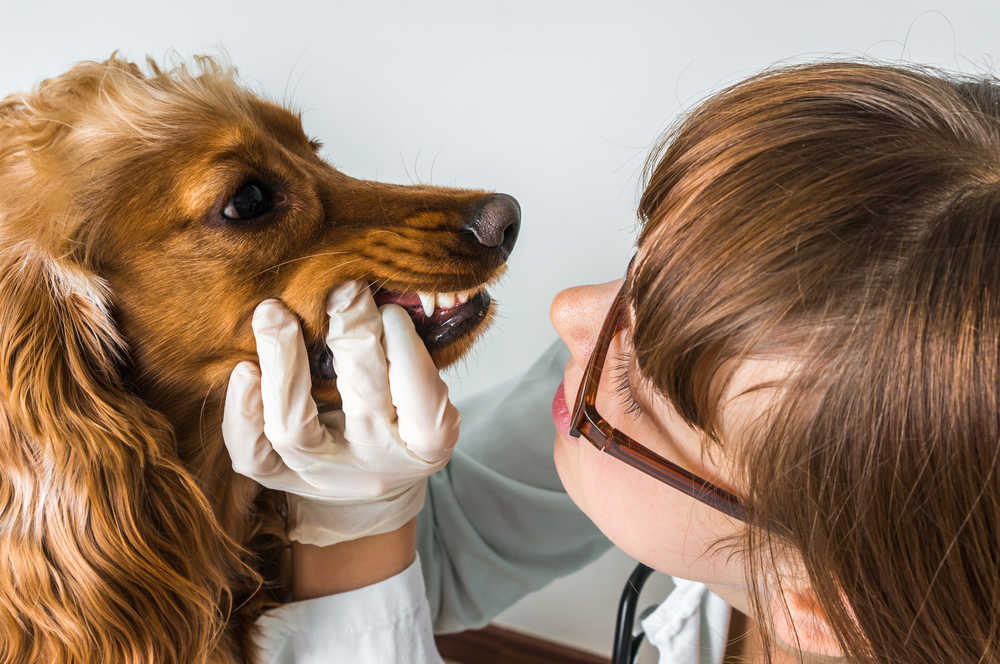
Mouth sores can take many shapes and forms:
1. Chronic Ulcerative Paradental Stomatitis (CUPS)
These lesions typically occur on the inner surface of the lip that is touching a tooth. CUPS lesions can be prevented through meticulous at-home oral care after a thorough professional cleaning. Some dogs with CUPS will also require periodic medications.

CUPS typically requires a thorough dental cleaning and prophylaxis under general anesthesia, possible biopsies, and medications to control the disease. At-home oral care, such as daily tooth brushing, is essential. Learn more.
2. Eosinophilic Granuloma Complex (EGC).
The significant difference here, in appearance, is that the ulcerated lesions tend to be farther back and are not correlated with a tooth – this condition is less common in dogs than cats. You can see these lesions farther back in the oral cavity on the picture below:
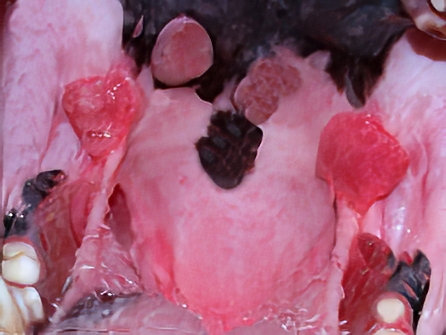
3. Masses/Tumors
It is essential to recognize that masses may look similar to ulcers, but are very different – oral masses are very often cancerous and need to be treated right away. Oral cancers cannot be prevented but require treatment as soon as possible as they tend to be aggressive life-threatening tumors.
Oral masses will need to be diagnosed through biopsy. Depending on the mass, and if it is cancerous, treatments may include surgery to remove it, chemotherapy, or radiation. View more pictures with our article about lip tumors or gum growths.
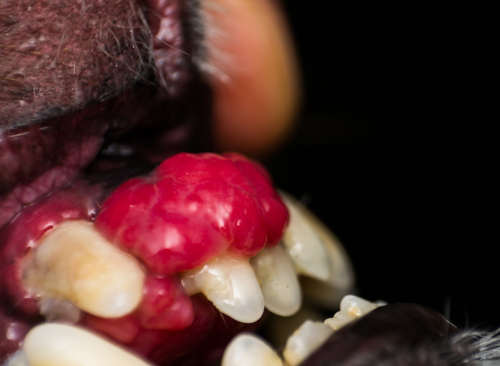
Below is a picture of a cancerous mass in a dog’s mouth (melanoma tumor):
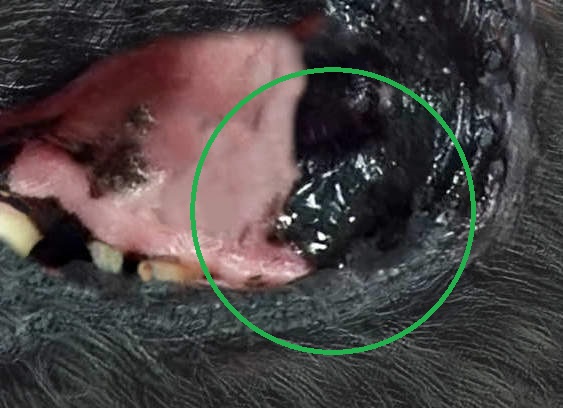
4. Papillomas
Papillomas in dogs are benign tumors called by the papilloma virus. They are typically found on the lips, gums, or mouth, as shown on the picture below:
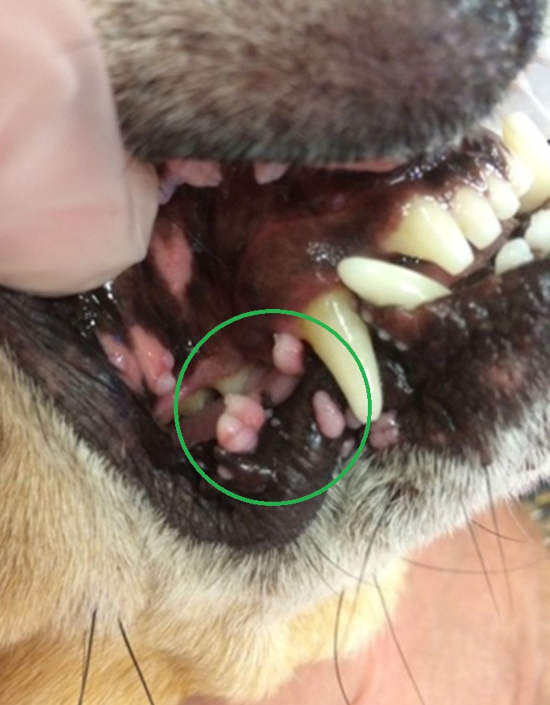
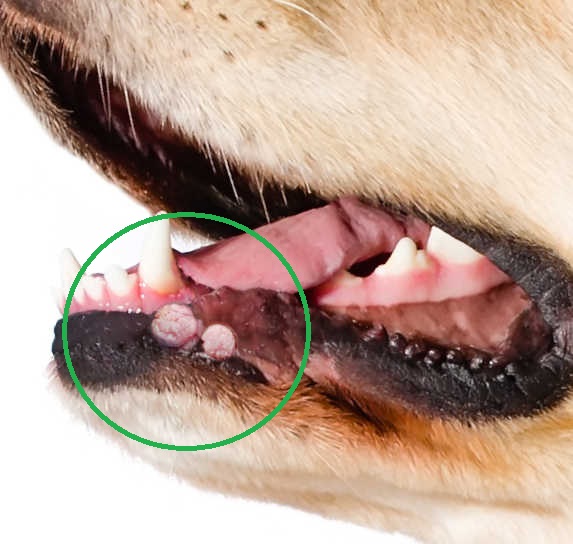
5. Injury
Especially due to electric shock after chewing on a cord. All electric cords should be kept up and out of reach of your pets to prevent injuries from electric shock. See this example picture from SivetHealth.com featuring an electric shock injury in a dog’s mouth.
Remember that an accurate diagnosis can only be made after a full physical examination, so it is important that you do not delay veterinary treatment.
Steps you can take at home to help your dog
While you are waiting to have your dog seen by their veterinarian, there are a few things you can do at home to help them.
1. Offer your dog soft food
Because oral lesions are painful, offer your dog soft food to eat. If your dog eats a dry kibble diet, you can simply soak their food in some warm water or low-sodium chicken broth. This will enable them to eat soft food but will not add to their discomfort by risking a gastrointestinal disturbance from switching their food.
2. Encourage drinking
You should also encourage drinking to maintain their hydration. Having plenty of fresh, cool water available at all times is important. Adding water to their food, whether it is dry or moist, is another good way to increase their water intake.
Never administer human pain medication to your dog without explicit instructions from their veterinarian. Many human medications are toxic to dogs and may result in severe illness or death. Others may make it impossible for your veterinarian to administer appropriate medications due to long-lasting interactions, resulting in your dog suffering needlessly.
When to call your veterinarian
Any oral lesion in a dog indicates the need for an examination with their veterinarian. There are many causes for these lesions, and a proper diagnosis must be made to ensure proper treatment.
Oral lesions of any kind tend to be very painful, and almost all will require veterinary treatment. Papilloma, cancerous tumors, and autoimmune conditions may all cause oral lesions and mouth sores.
Costs for veterinary treatment will vary widely, from a few hundred dollars to thousands, depending on the cause and severity. Early intervention is the most important step for both the dog’s health and to minimize costs.
What are the visual characteristics of mouth sores?
An oral ulcer in a dog’s mouth may vary from a small area of discolored tissue, as shown on the picture below:
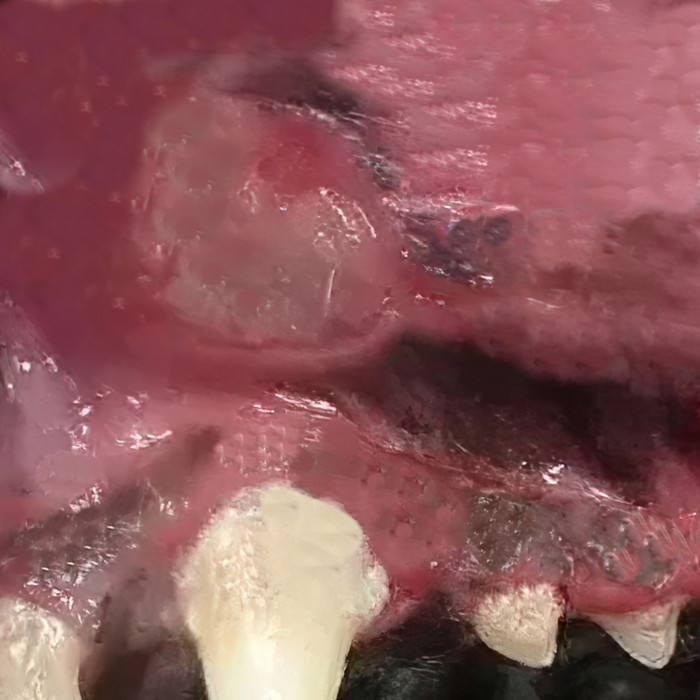
to a large area with raised edges and a necrotic (dead) center, as shown in the picture below:
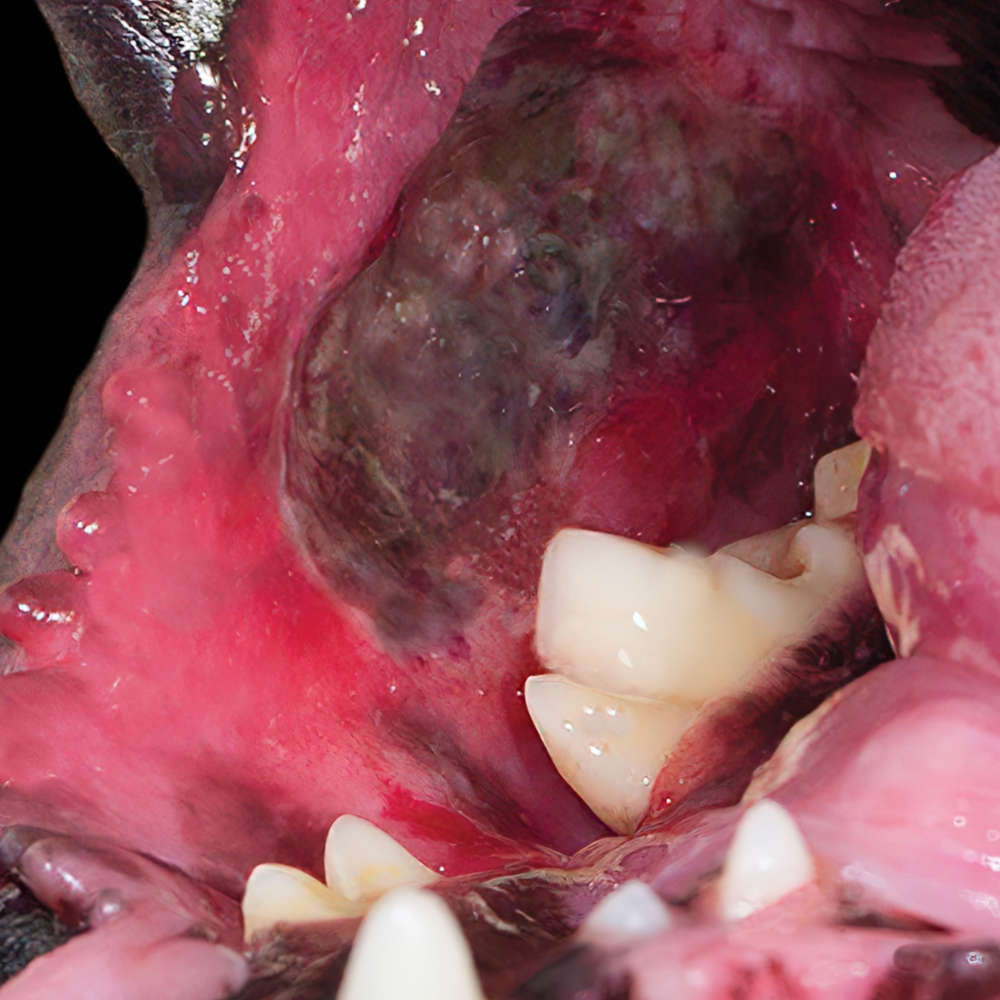
Some oral / mouth ulcers will bleed and come may become infected and have a foul smell:
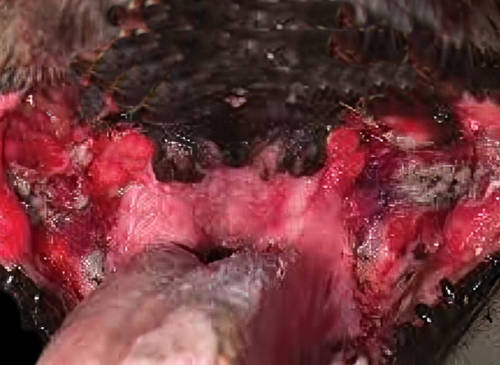
Frequently asked questions
Why does my dog have sores around his mouth?
There are many causes of oral ulcers (sores) in dogs. These include oral masses, cancers, autoimmune disease, injury, and CUPS.
Are mouth sores in dogs contagious to humans?
No, oral cancers, papillomavirus, EGC, and CUPS in dogs are not transmissible to humans.
Can food allergies cause mouth sores in dogs?
Allergies play a role in the eosinophilic granuloma complex, but this condition is rare in dogs.
Do mouth sores heal quickly in dogs?
Most mouth sores in dogs typically heal rapidly once the dog receives appropriate veterinary treatment.
Learn more about Mouth Bumps in Dogs.
Disclaimer: This website's content is not a substitute for veterinary care. Always consult with your veterinarian for healthcare decisions. Read More.


Be the first to comment